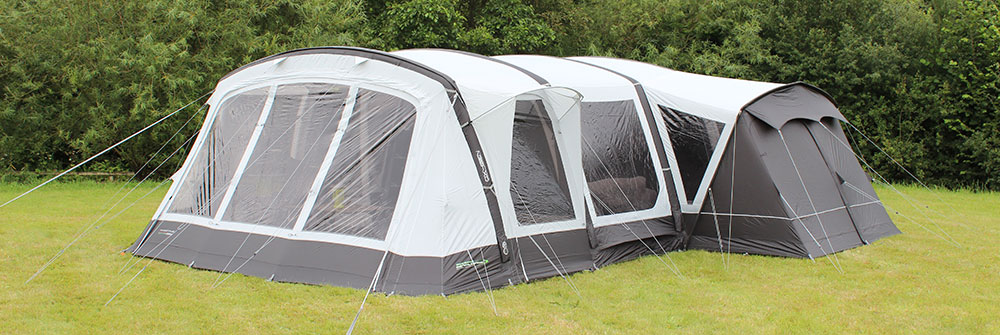
Inflatable tents have become increasingly popular, due to their ease and convenience of pitching. Each brand has a selection of them now, which all work slightly differently, but essentially there are now two types - Single Inflation or Multiple inflation. Single inflation tents, these can be inflated from one beam, where as multiple inflation points, need each beam inflating separately.

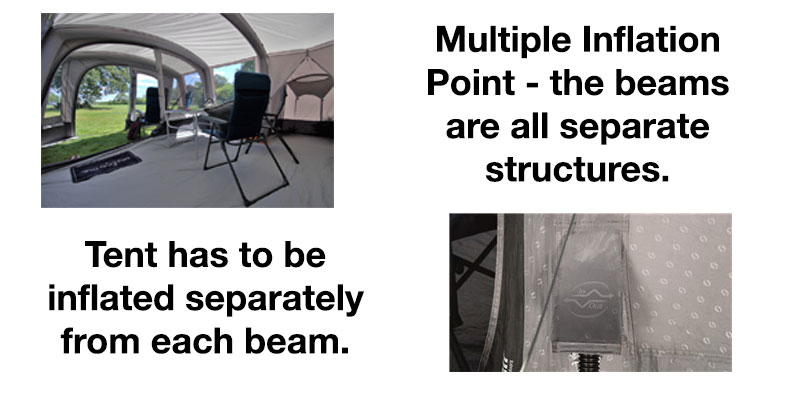
By design though, all work from the same system and rely on a pressurised air system to create a strong, rigid structure. A bit like a bicycle tyre, each tube holds an air pressure of anything from 4PSI to 8PSI, and creates a very strong, reliable frame for the tent.
Tube and Sleeve Design:
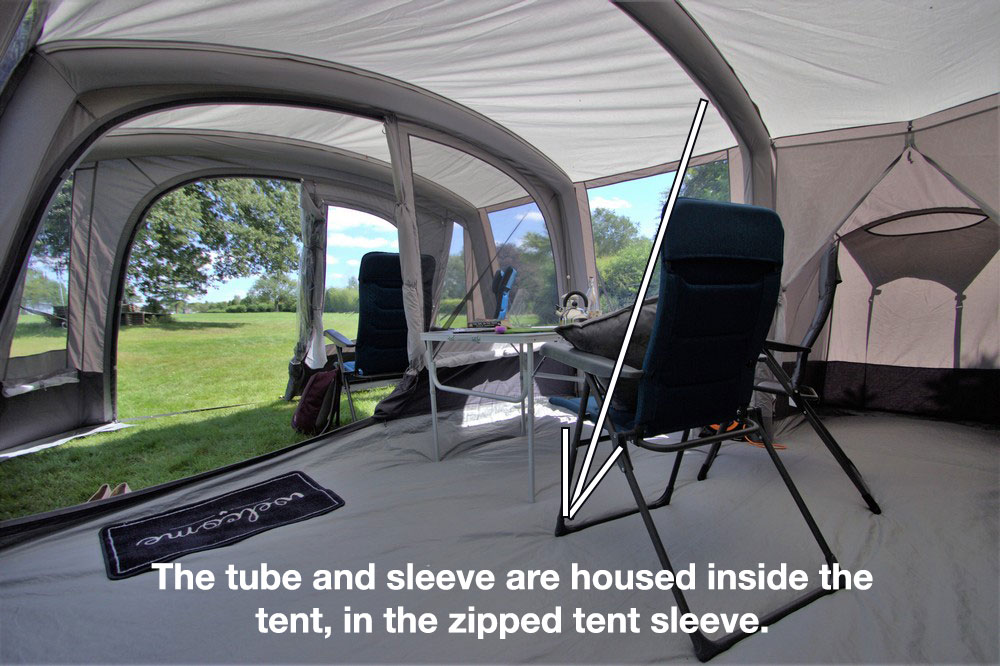
All tents feature this design, the tubes are pre-tested in the factory to check them for leaks, then they are deflated and inserted into a highly robust tube sleeve, this is to stop the tube over-expanding. Then, the tube and sleeve are inserted into flysheet panels within the tent. Confused? See below, which helps describe how the design works.
- There is a plastic tube, which can be inflated to a certain pressure.
- The plastic tube is inserted into a solid polyester sleeve.
- The tube and sleeve are then housed in a tent sleeve inside the tent, and once inflated provide the tent's structure.
- There is a small hole in the flysheet at each beam, where the valves sits, so the tent can be inflated or deflated from the exterior.
The Air Valve
There is a simple valve to one side of the tent, which you open and insert the pump into, and then inflate the beam, which then creates the tent’s structure. It is incredibly simple and well thought out, and far easier than the hassle of poles. Each brand has its own unique pump valve, which should come with the tent. There are typically two valve systems:
Airbeam - Twist Valve
This is Vango's design - a twist valve, which is locked closed, and then you twist the pump onto the valve, which opens the valve, and allows you to inflate the tent. Once you remove the pump, the valve seals itself locked.
When it comes to deflating the tent, there is a white point on the valve, you twist this to the open setting, and it allows air to escape the valve.
Push Button Valve
There is white button on the valve - you firstly push this button in, and then this closes the valve. Then you insert and twist the pump onto the valve, which will open the valve and allow air into the beam. When you remove the pump, the valve will close itself. It is important to close the valve before inflating the tent, or when you remove the pump, all the air will escape out of the open valve. To close the valve, make sure it is pushed outwards.
When deflating the tent, simply push the button to open, and the air can flow out of the tent.
Type of Inflation
Single Inflation Point:
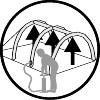
A single inflation point tent, is a tent which can be inflated from one beam, which is interconnecting to all of the other beams inside the tent. Usually all beams are linked, and can be inflated from any main tube. This allows multiple people to help, and for the tent o be pitched far quicker.
Advantages:
- Tent inflates from one point, so you can plug a pump in and sit back and relax.
- Features bracer beams, which strengthen the tent structure.
- Can be quicker to inflate.
Disadvantages:
- This style of tent is more prone to issues - as there’s more points of connection between beams, meaning more chance of a fault. Though the product is tested, we would still see more single-inflation tent issues than multiple inflation point issues.
- Harder to repair or find where the air is coming from - you have to lock off each individual beam, to check where the leak is, and then fix that specific tube.
- Harder to deflate and pack away - this is because as you are packing the tent away, the air can move from tube to tube, leaving air in the frame system.
Multiple Inflation Points:
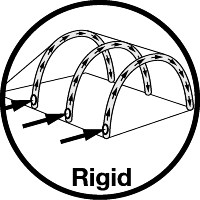
Advantages:
- Less likely to fail as one simple beam per structure.
- Easier to repair if a singular tube goes wrong - simply remove this tube and replace it.
- Mini break between inflating each beam.
- Much easier to deflate and pack away
Disadvantages
- Less likely to have bracer beams
- Much more reliant on the camper to pitch it, as you cannot simply plug a pump in and let that do the hard work.
Are they Reliable?
Yes, as we see more accidental damages to pole tents, which are more reliant on the camper to pitch them. Air tents have the structure pre-installed, so there’s very little a camper can do to damage it. Also they tend to perform better in the wind as the beams will simply just snap back into shape if deformed by strong winds. Most are are tested to 45-55mph. Anything stronger than this type of weather, and ideally it is not recommended to camp.
If you are uncertain, or feel worried, it is advisable to purchase a spare air tube, which is the same as having a spare tyre in your car or bike, and then you have the peace of mind if anything does go wrong.
